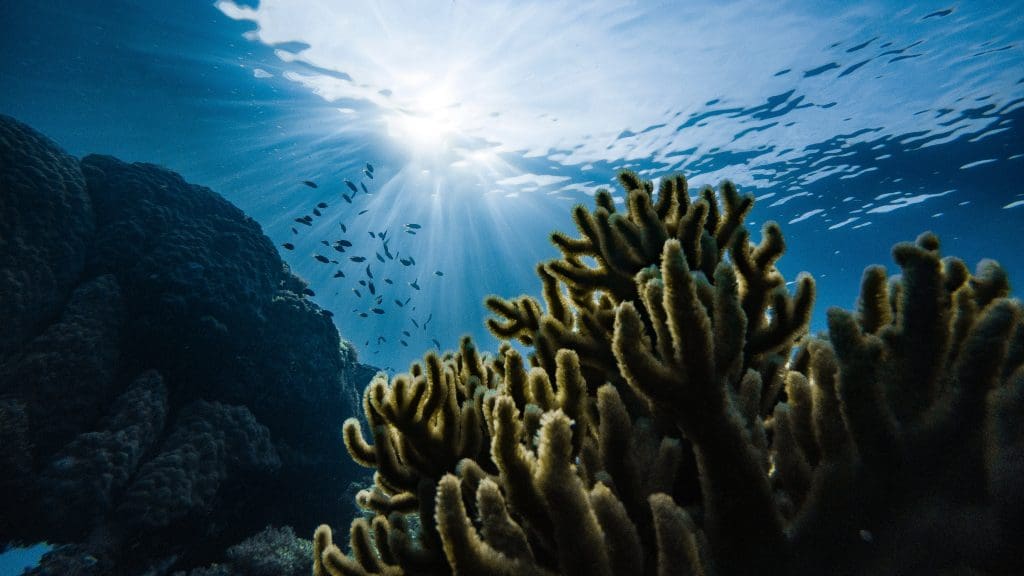Once upon a time, leading global oil companies figured they could leverage plastic and petrochemicals as a hedge against declining demand for fossil fuels. Now it looks like the window of opportunity is already beginning to close. In the latest development on that score, a research team based at Japan’s Kobe University has figured out how a humble microscopic form of algae can be induced to spit out D-lactate, a key building block for bioplastics. For a sparkling green bonus, the new process can be performed on a platform of seawater.
Out Of The Plastic Fire, Into The Bioplastic Frying Pan — Or Not
If “microscopic form of algae” makes you think of cyanobacteria, run right out and buy yourself a cigar. The Kobe team focused on cyanobacteria because it provides a pathway for working around a key sustainability stumbling block for biodegradable plastic in the category of polylactic acid or PLA(*4).
Currently, researchers have been focusing on generating PLA from the bacteria e. coli. The problem is that e. coli needs something to eat. That something is mainly plant sugar from corn or sugar cane, which brings up a whole host of land use, water resources, and agricultural sustainability issues.
Cyanobacteria avoids some of these issues. Here’s the explainer from the research team at Kobe:
“Cyanobacteria…is an ideal microbe for producing useful substances, since it can convert CO2 fixed via photosynthesis into various target compounds. In addition, cyanobacteria has a much higher photosynthesizing ability than plants, meaning that it can even be grown under strong light. It does not require soil and many varieties can be cultivated in seawater. Therefore it is hoped that cyanobacteria can provide the ultimate basis for bioproduction as it only requires sunlight, CO2 and seawater.”
To be clear, this doesn’t mean an endorsement for continuing to flood the waters of the Earth with single-use disposable plastic items, biodegradable or not. The idea would be to replace disposables with reusable items that can be disposed of responsibly once they reach the end of their usable life.
Making Plastic From Sunlight, CO2, & Seawater
That sounds simple enough, but as always the devil is in the details. Although previous research has demonstrated that cyanobacteria can produce D-lactate from sunlight, CO2, and seawater, until now nobody has figured out how to ramp up production to a meaningful level, because the production pathway was not understood in detail.
So, the Kobe team started at the beginning. They took a commonly studied strain of cyanobacteria (Synechocystis sp. PCC 6803 for those of you keeping score at home) that is known for being amenable to genetic modification, and subjected it to a technique they call “dynamic metabolomics.”
Dynamic metabolomics builds on regular old metabolome analysis, which refers to the identification of compounds inside cells. The dynamism comes in because the Kobe method enables the identification process to play out over time.
Based on their own previous research, the team zeroed in on the role of the malic enzyme in D-lactate production. Deploying the dynamic analysis, they took a look at the difference in two cells, one with no functioning malic enzyme and another with an engineered overexpression of malic enzyme.
Let’s skip ahead to the part where they subjected the engineered version of Synechocystis sp. PCC 6803 to a fermentation environment aimed at growing the cells to maximum density. In this environment (dark + no oxygen), the engineered cyanobacteria achieved a of 26.6 g/L for D-lactate, more than double the previous world record of 10.7 g/L.
For more details, check out the team’s study in the ACS journal Synthetic Biology under the title, “Malic Enzyme Facilitates d-Lactate Production through Increased Pyruvate Supply during Anoxic Dark Fermentation in Synechocystis sp. PCC 6803.“
Onward & Upward For Bioplastics
So far, so good. The Kobe team anticipates that maximizing the photosynthetic pathway of cyanobacteria will further optimize D-lactate production and lead to a process that can compete with other plastics on the open market.
While they’re working on that, it’s worth mentioning that the humble cyanobacteria has emerged as one of the workhorses of the sparkling green economy of the future, and it’s not just about the plastic.
Here in the US, a research team at Brookhaven National Laboratory has been putting the microbe to work in a hybrid light-harvesting device, and a team at the Pacific Northwest National laboratory has been exploring its potential for converting methane biogas into other usable fuels.
Then there’s that whole thing about producing renewable ethanol from cyanobacteria with sunlight, CO2 and seawater. Despite the collapse of one major private sector endeavor back in 2017, the field is still active. The Energy Department’s Office of Renewable Energy and Energy Efficiency, for one, is a fan. CleanTechnica is checking in to see if it has any research under way, so stay tuned for more on that.
Source: CleanTechnica









